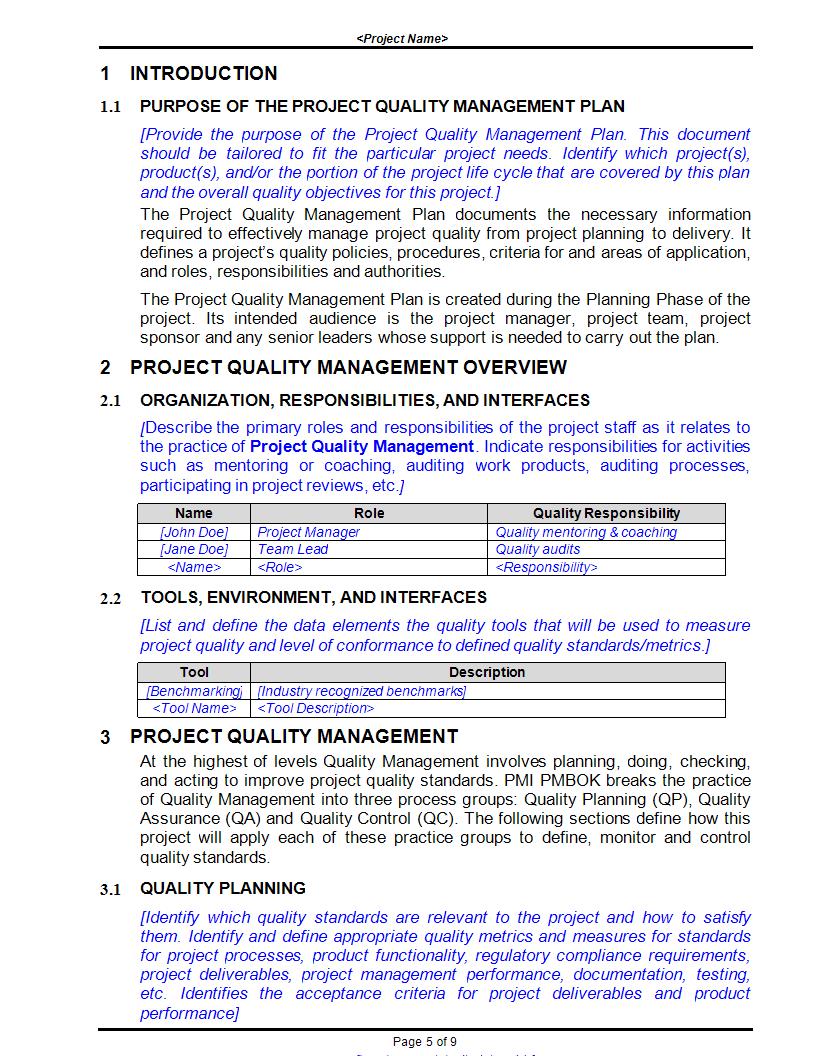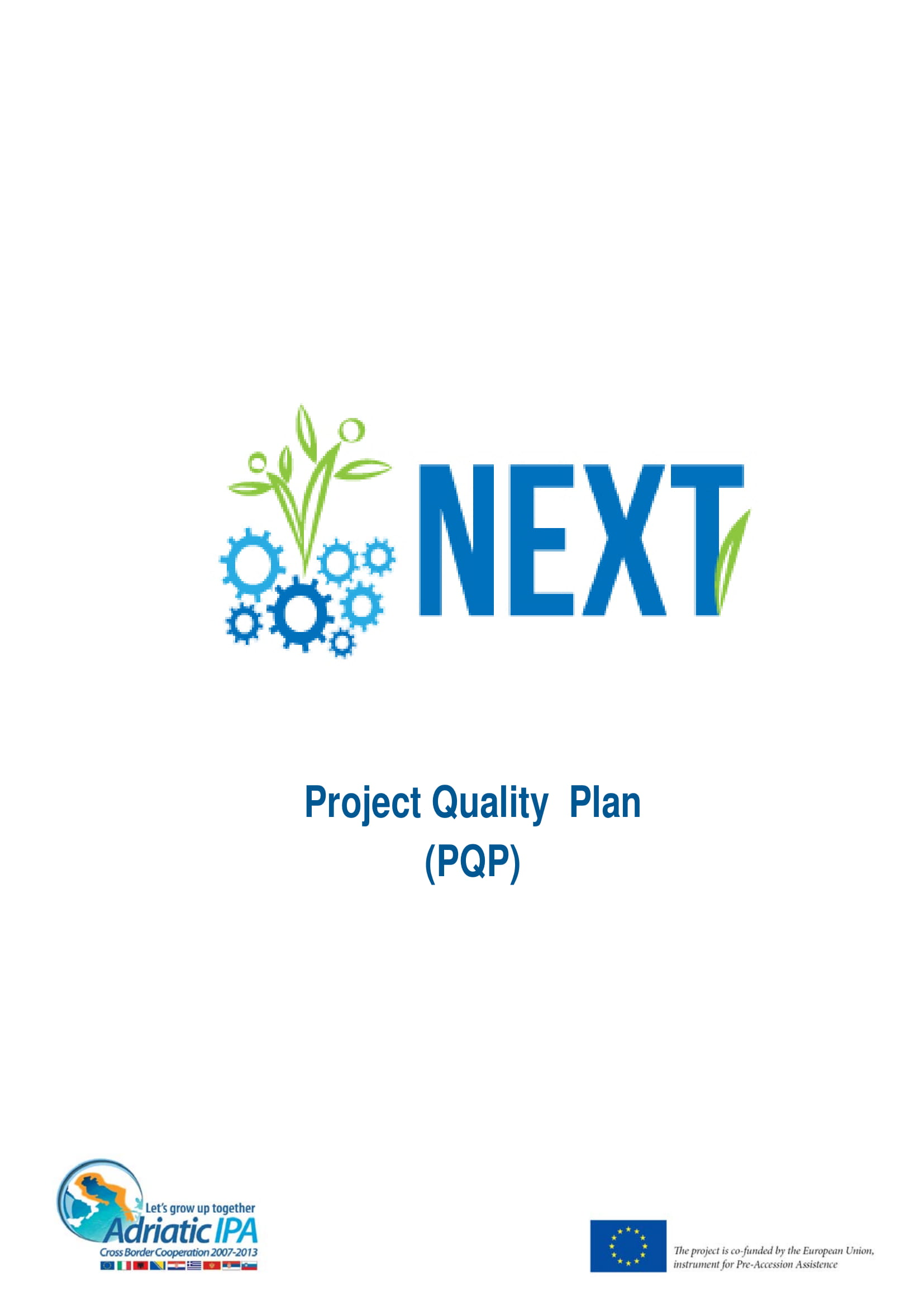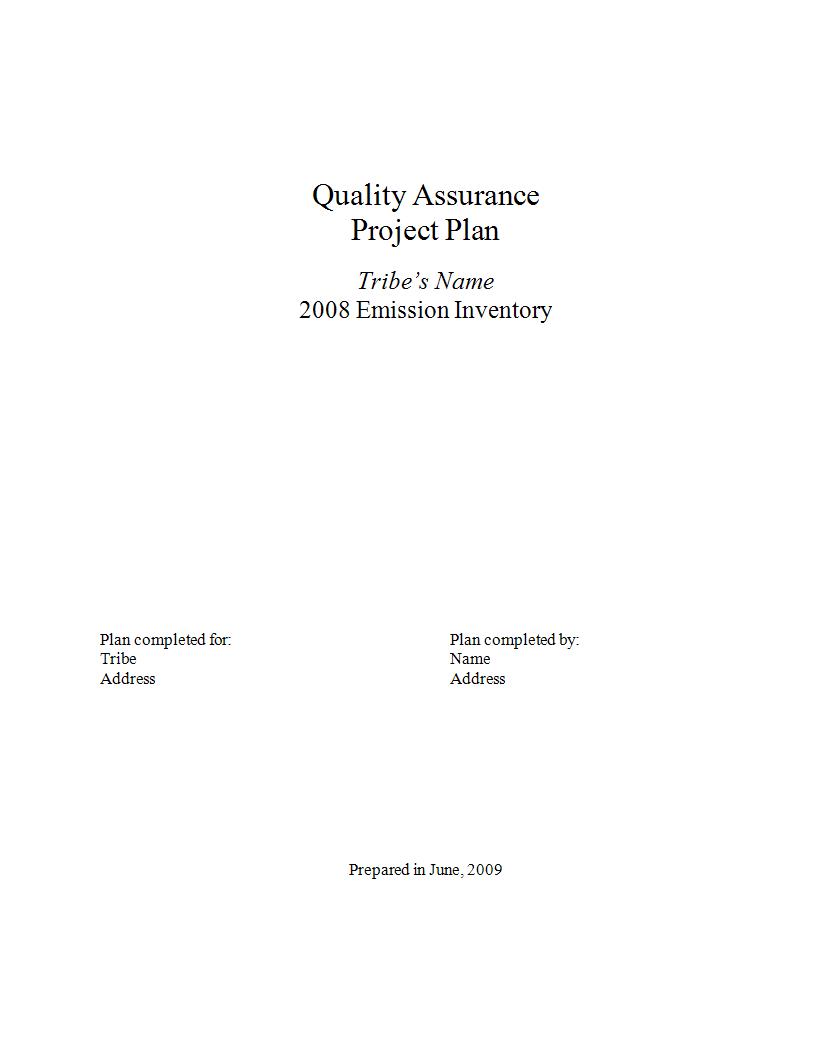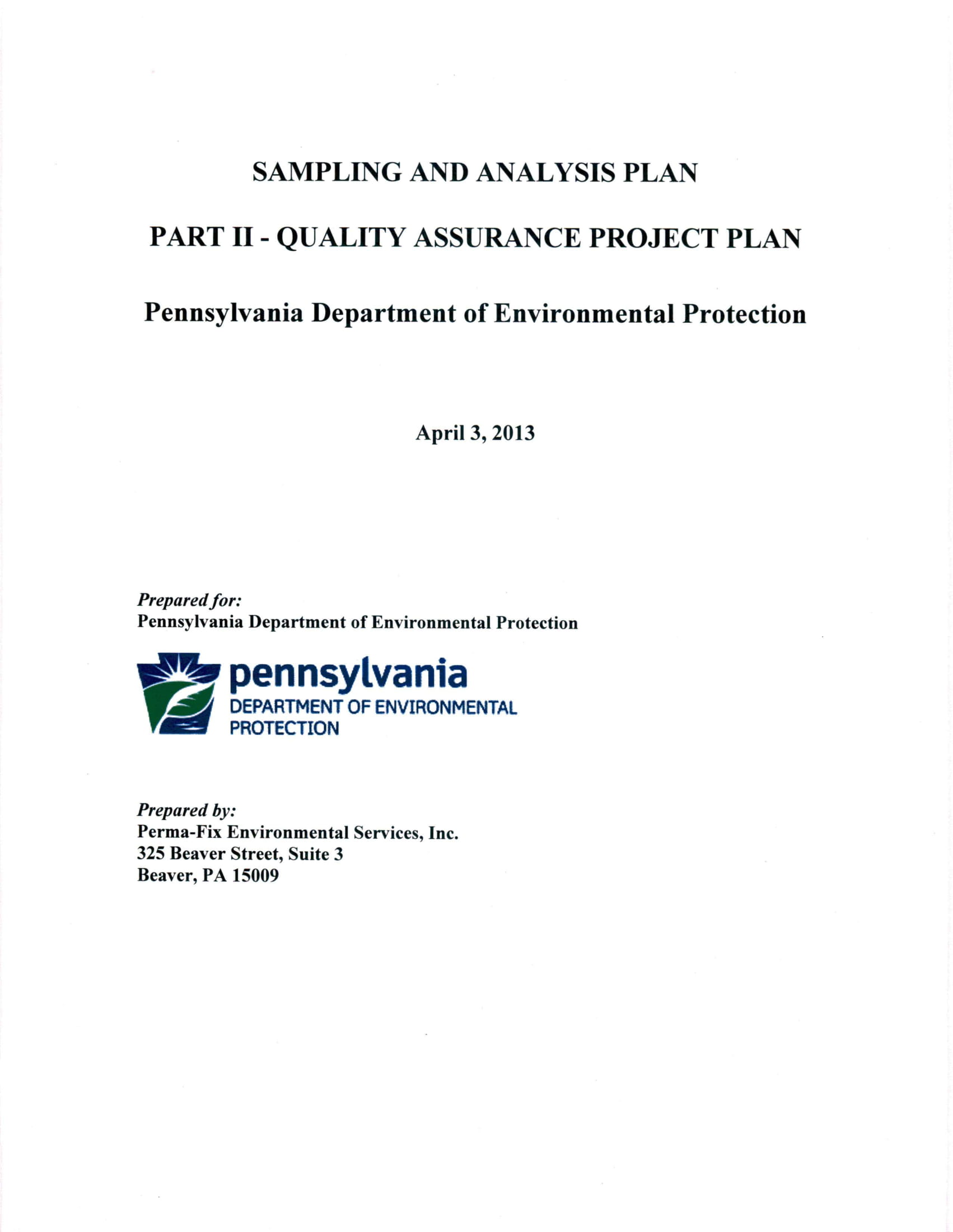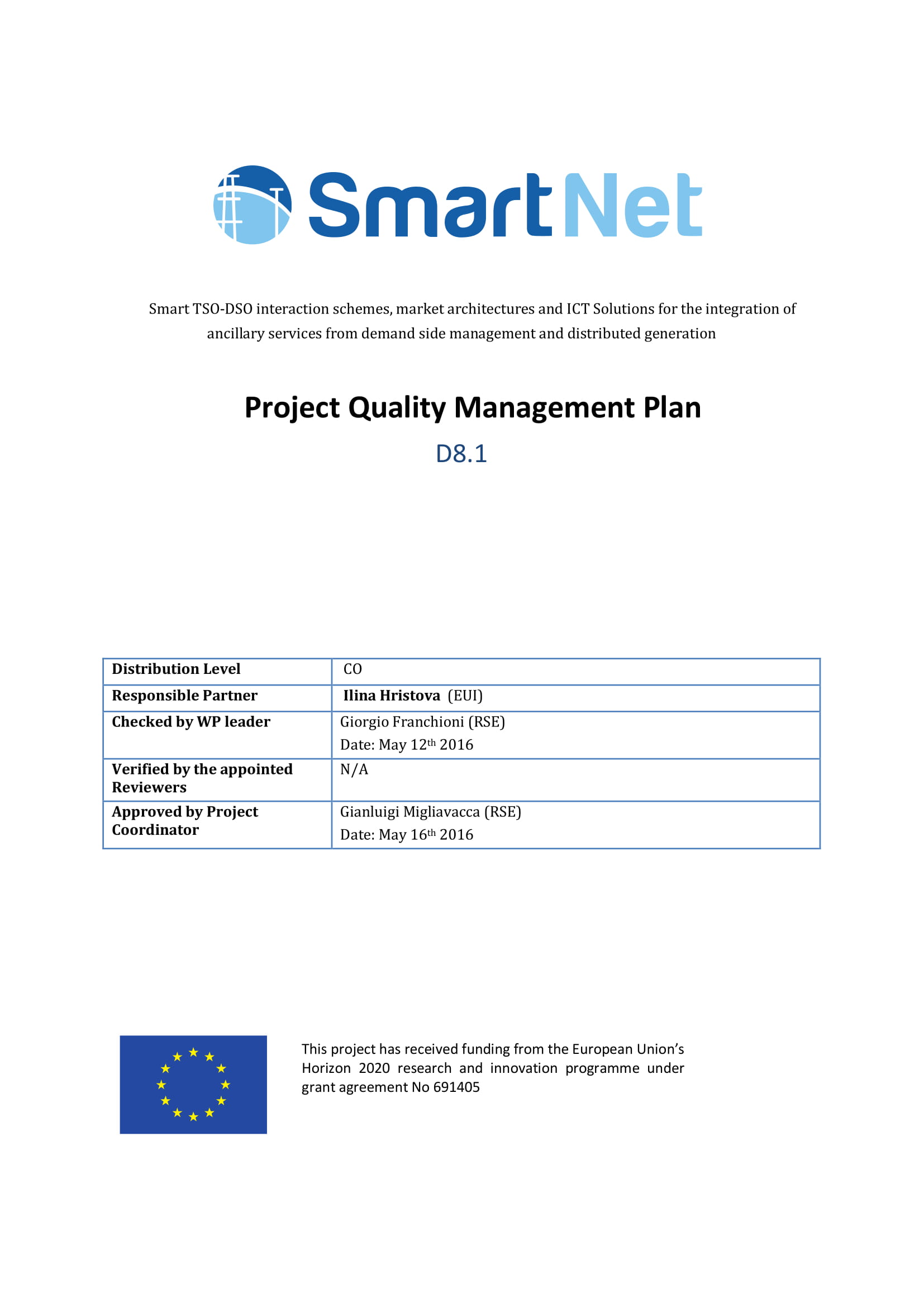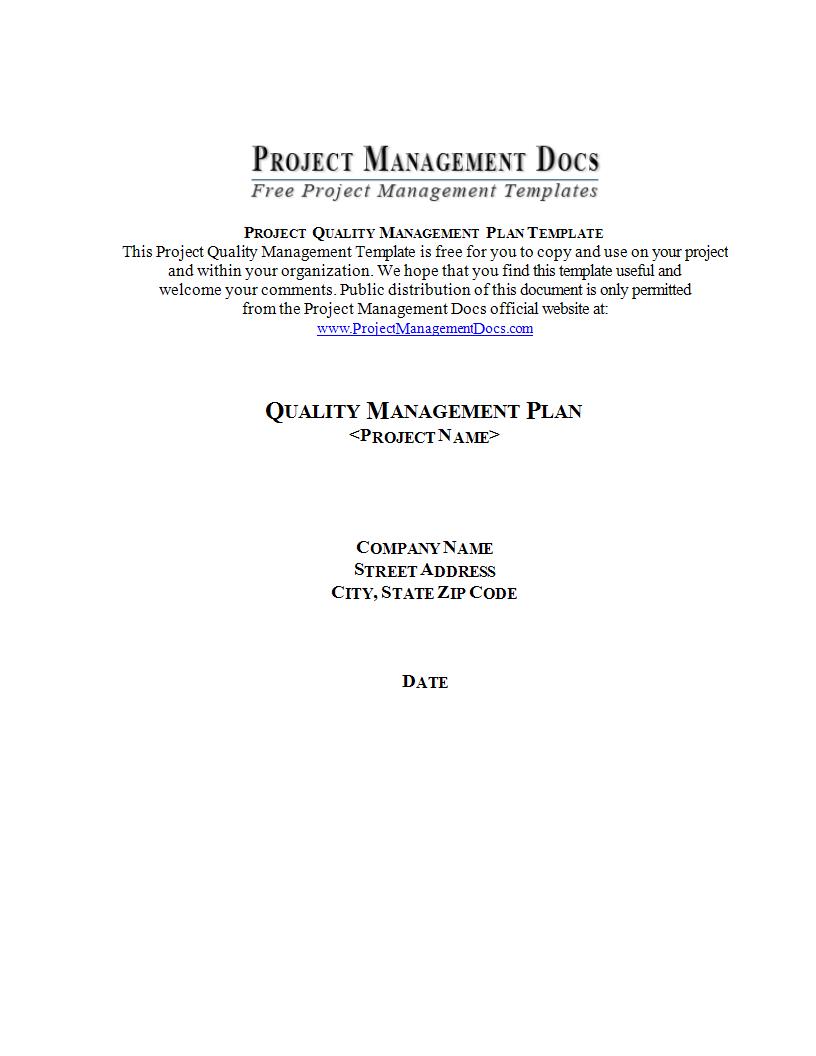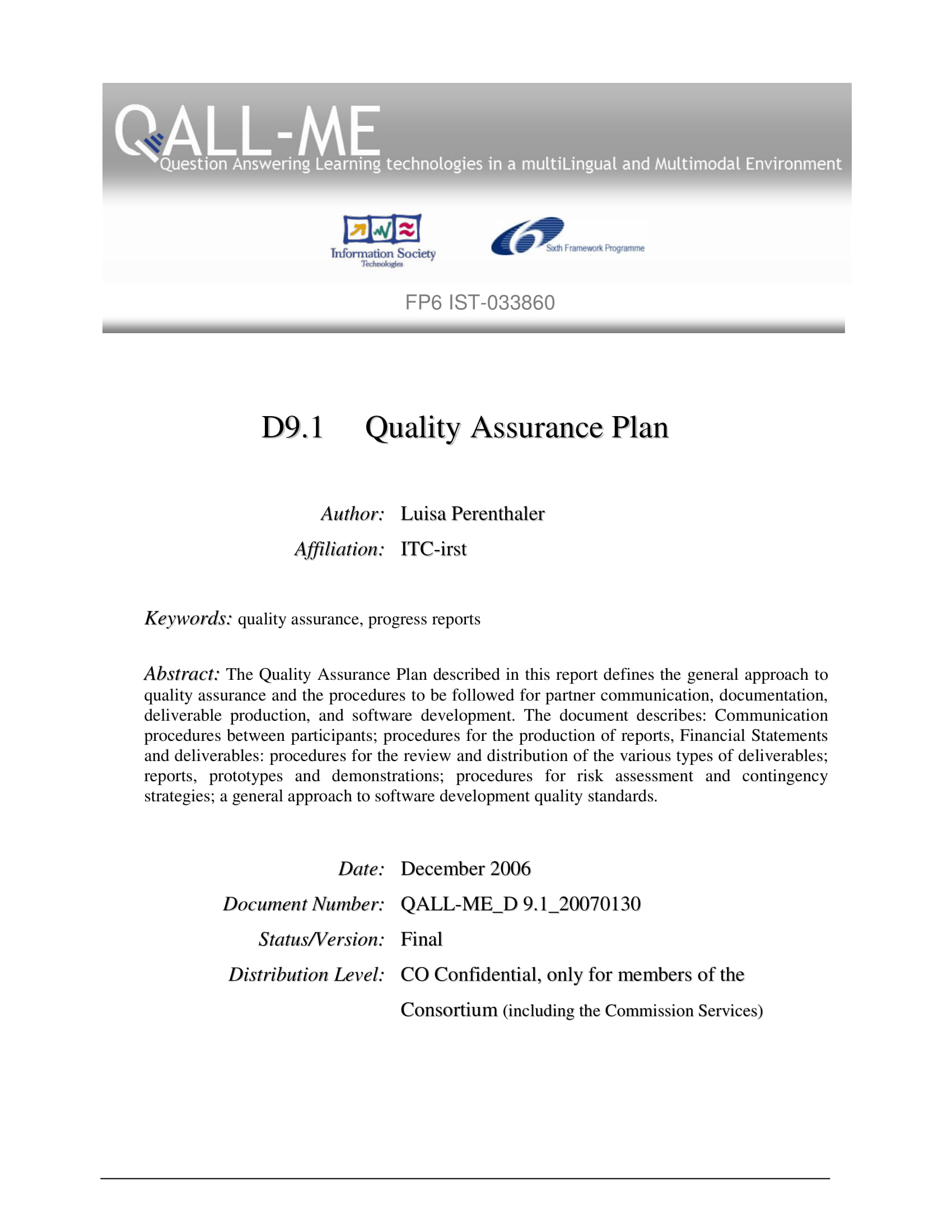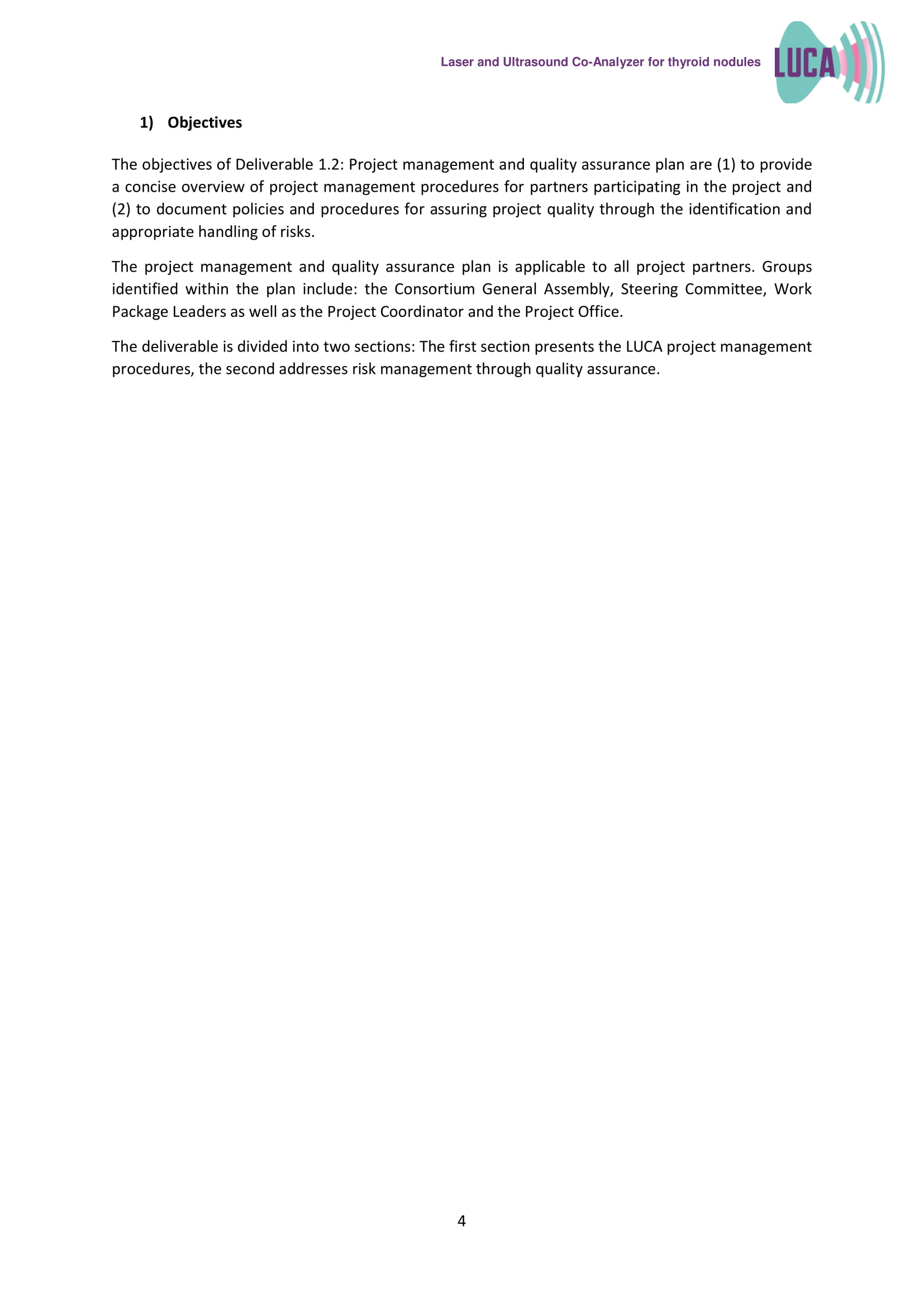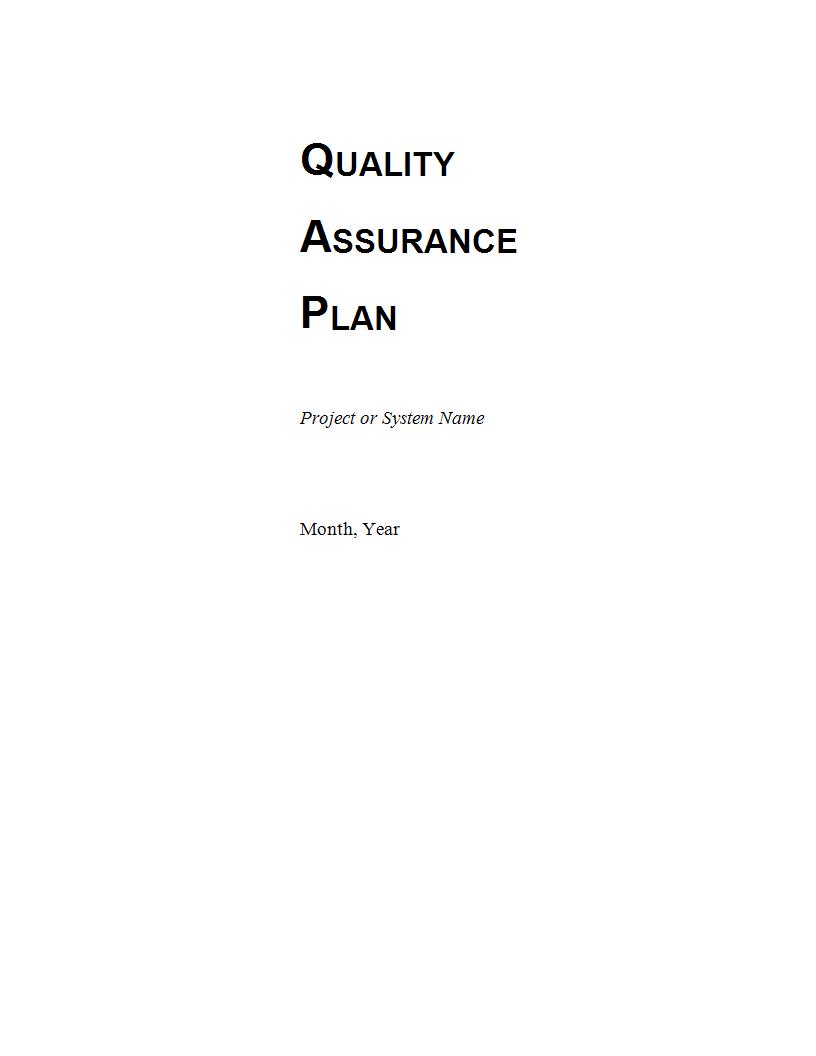9+ Project Quality Assurance Plan Examples to Download
Doing a project without thinking about the quality of the output is setting yourself up for failure. Regardless if it’s a small or large project, it is important to think about the overall quality that you want to achieve before you even start doing your project. Putting all of your effort to other aspects of the project but not focusing on the its quality can lead to future disappointments. That is why it is important to set a standard on the quality of your output and a distinct process to test it before handing it over to your client.
Other important aspects of the project such as making sure that the project completes on time, making sure that the project does not go over budget, and ensuring that all the team members are focused on delivery of the completed project may preoccupy your team members. However, you still need to effectively check the responsibilities to each of your team members to make sure the quality of the final outcome is not compromised. With that in mind, this is the reason why it is important to have a quality assurance plan that will help make sure that your project is at its best once it is completed.
What Is a Project Quality Assurance Plan?
A project quality assurance plan is a critical part of any project. The enables you to agree with a set of quality targets with the client. At the same time, it is a document that a serves as a guide to the project team in order to produce a project of the utmost quality. It contains a set of documented activities that are required to be carried out in order to ensure that the output project is satisfactory for the customers. As you may have understood by its title, it is meant to ensure that the project is of the best quality produced within the specific deadline.
The plan also helps in monitoring and controlling the level of quality in order to see that all levels of the set quality targets are adhered. The main purpose of the quality assurance plan is to direct and facilitate the creation of activities in every processes that will help ensure the right output is delivered to the clients. That way, you can be sure that the output you deliver is at par with the quality your client expects.
Simply put, the project quality assurance plan outlines the set of activities needed for you to monitor and control the quality of what you are making. It can hep you constantly monitor and check the quality of your project along the way. It sets targets that should be achieved in order to proceed to the next step of production. It is an effective way of avoiding or controlling mistakes from ever making to the client. Furthermore, it acts as your level checker which helps you check if the levels of the quality targets you have already set are achieved. It is also your guide into achieving the end quality you have for your final output.
Project Quality Management Plan Template Example
Project Quality Plan Example
Quality Assurance Project Plan Template Example
Importance of Project Quality Assurance Plan
Since the plan helps you to avoid mistakes when it comes to the quality of the project, it is a critical part of your entire project. It will help you avoid quality mistakes that can lead to your clients not trusting your abilities in making a project. In short, a project quality assurance plan can help you save your reputation as a professional in the industry. In this case, you can produce a good quality output while functioning and delivering within your deadline.
And since the plan contains the outline of the activities needed to be done in order to check the quality of the output, it is a significant document that that will guide your team into achieving the perfect version of your supposed deliverable. This way, it leaves no room for you to produce an output that is less than what your clients expect. This will not only save you your reputation as a professional, it will also help make sure you stay on the right track toward accomplishing your project.
In addition, you will define objectives, roles and responsibilities, coordinate with other plans, and define tasks and the schedule. That way the tasks in completing the plan are equally divided to your team. It will surely make tasks more doable and allowing everyone involved to focus on a particular tasks ensuring that the best strategies and skills are used to complete the project. Thus, helping you focus on checking by level of activities instead of checking the final product altogether then starting all over again if it’s subpar the intended quality. In away it is a comprehensive and logical way of ensuring the quality of the output.
Quality Assurance Project Plan Example
Project Quality Management Plan Example
Project Quality Management Plan Template Example
Project Quality Assurance Plan Example
What Are the Quality Assurance Activities?
In order to make sure that quality is maintained from the beginning of the project until last stages of production, there are activities to make sure everything is intact and the steps in achieving a flawless output is followed. Quality assurance activities or QAA is designed for product evaluation and process monitoring. Not only that, it also assures that all processes are accurately carried out based on the process control plan. The activities are basically put into place to make sure that end product of a project is of the best quality. With the quality assurance activities, the expected output is monitored for conformance to standards that have been set beforehand. At the same time, the operations for each step are monitored for conformance to the procedures.
In this sense, the quality assurance activities are the necessary actions taken intended to monitor and check if the standard procedures are followed and if the output has the same level of quality as expected. It assures that there is are clear and achievable standards and at the same time, evaluate and monitor compliance of the products to the established standards. With that in mind, the key technique used for product evaluation and process monitoring is auditing. The set activities also make sure that the necessary processes for production are strictly followed in order to make sure that the output is at par with the expected outcome.
In the same light, the audit report as well as the management assures that findings and recommendations for development are presented to make sure that it is in conformance with standards and/or procedures. Overall, the QAA assures that
- the quality plans, standards, and procedures are carried out and followed during all operation and production activities;
- in critical phases of testing, acceptance and delivery, configuration control is regularly maintained;
- a series of reviews exhibiting the performance required by the standard or contractual specification establishes an authentication process;
- technical reviews, inspections, and walk-through are done so that verification and validation activities are carried out;
- formal testing is done through carefully following the plans and procedures; and
- requirements are complete, testable, and properly expressed.
Learning Technology Project Quality Assurance Plan Example
Project Management and Quality Assurance Plan Example
Project Quality Assurance Plan Format Example
How to Develop Quality Assurance Plan
The quality assurance plan of your project will have a big impact on its success. Since the plan contains all necessary information regarding the quality assurance activities needed to be carried out during the production or implementation of the project, it is deemed that the quality assurance plan is critical and composite required document.
Quality assurance plan is developed in order to create a program for reviews and audits that will monitor and check if the defined project processes are followed correctly. Simply put, it is the quality view of the project’s plan. With that in mind, you should also have the basic information on how to develop a remarkable quality assurance plan. Listed below are the necessary steps for that purpose:
1. Ensure quality objectives are defined for the project
As the project quality/process manager, you are not in charge of necessarily define the quality goals for the project. However, you are in charge of ensuring that the definitions are created and is agreed by the client. This means that you have to make sure that there is a clear definition on the quality objectives that is in accordance to what the client expects. In addition, the team in charge of defining such objectives must conform to the standard set of quality goals visible in a quality policy statement since it can be the basis for the definitions. In addition to that, it is your responsibility to ensure that these objectives should be be defined in a measurable manner.
2. Define quality assurance roles and responsibilities
After clearly defining the objectives of the project, you need to define the organization, roles, and responsibilities involved in the activities for the project. This usually includes the Quality Assurance reviews through a clear reporting channel. In relation to this, a report should be submitted to the project review authority about the quality assurance activity that has to be followed or has been done and followed.
As the quality/process manager, you carry the responsibility for the process aspects of quality, and perform process reviews and audits. In addition, you also have to ensure that the proper planning and conduct of the review events described in the review and audit section of the quality assurance plan are carried out successfully. It is also your responsibility to choose the person in charge of overseeing or conducting the audits, preferably a person who is not member of the project development team.
3. Coordinate with developers of referenced plans
In order to make sure that the team is pursuing the project within the standard procedures, the quality assurance plan also references other plans that describes the project standards and how various supporting process should be handled. This will help the team determine what type/s of quality assurance reviews should be carried out and how frequent it should be done. Some examples of these reference plans are:
- Documentation Plan
- Measurement Plan
- Configuration Management Plan
- Software Development Plan
- Subcontractor Management Plan
4. Define quality assurance tasks and schedule
Now that you basically have the basis for how you should carry out your project, you still need to make sure everyone involved can understand and work on the same goal. Basically, you need to make it easier for everyone to understand how the quality review process is going to work. This is why it is very important to clearly identify and define the quality assurance tasks and activities for the quality assurance plan. With that in mind, here are some examples of the reviews included in the quality assurance plan:
- In ensuring that the defined process for the project is followed, there should be an audit/review specifically designed for it.
- A set of audit/review activities of the project to make sure that the what type of work that has been described in project plan is followed.
- Approval of deviations from the standard organizational project processes.
- Assessments for process improvement.
Conclusion
As the person in charge of overseeing the quality of work that you present to the client, having a strategic and smart quality assurance plan can save the whole team from submitting low quality output/s. Since the plan is basically there to make sure that the team makes the best version of their output, it is a critical document that must not be overlooked and taken for granted. With that said, a quality assurance plan ensures that the team makes an output based on the set standard and at par with the clients expectation.




